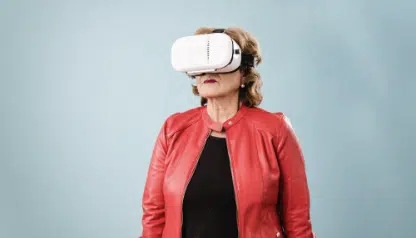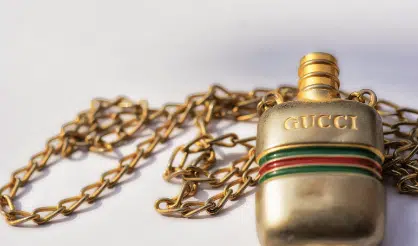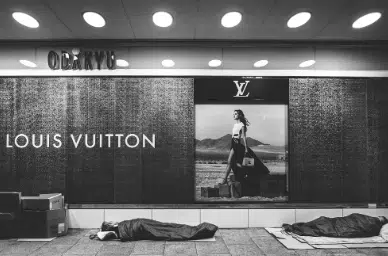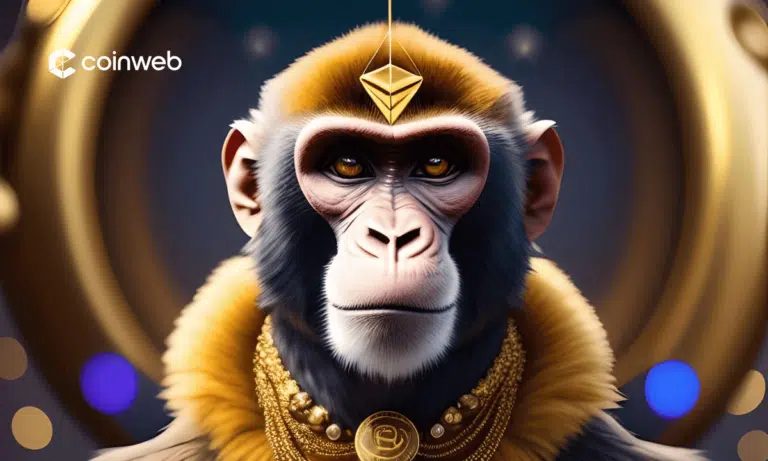TLDR
NFTs are digital assets that are unique in blockchain technology. NFTs have gained popularity as digital collectibles, allowing artists to reach a worldwide audience. In this guide, we will review the top fashion NFTs for the year.
The fashion industry and brands have also capitalized on the NFT market to connect with their customers digitally via fashion NFT projects. Some projects include virtual stores, virtual garments, metaverse fashion, augmented reality clothing, and digital twins.
In 2024, more trends have emerged from the NFT fashion brand through fashion NFTs. The fashion platforms have leveraged NFT to generate revenue and foster better customer relations.

New Concept: What are Fashion NFTs?
After the sale of Fabricant’s iridescent dress in 2019, which sold for $9500, fashion NFT has grown big. Very big. Fashion brands and luxury houses can now create one-of-a-kind digital collectibles worth millions of dollars.
The digital era replaces traditional fashion shows and brick-and-mortar stores with virtual catwalks and online marketplaces. Fashion enthusiasts worldwide can enjoy a unique and exciting shopping experience in this new landscape.
In early 2022, NFTs gained popularity as digital collectibles, allowing artists to reach a worldwide audience. However, Tommy Hilfiger’s recent NFT launch during New York Fashion Week added another level to its brand image.
Attendees could create their cryptocurrency wallets and acquire their NFTs by tapping NFC stickers scattered throughout the walls, which featured Tommy Hilfiger holding a Polaroid camera in an Andy Warhol-inspired fashion.
By skillfully merging the Tommy Hilfiger and Andy Warhol brands in this NFT, new possibilities have emerged for how NFTs can transform into a fresh fashion trend in the metaverse.

Why is Digital Fashion NFT Trendy in 2024?
The COVID-19 pandemic ensured that fashion shows were canceled and luxury stores closed. Fashion brands had to use innovative methods like video games to continue engaging with customers and generating revenue. As the metaverse concept expands and materializes, consumers are eager and able to show off their style and fashion personality.
Customers do not need to visit the four walls of a store to get their fit and size recommendations. As the metaverse grows, there is an increased interest in physically deploying NFTs. Fashion NFT projects have to bring together the physical and digital worlds.

How have Fashion Brands Capitalized on the NFT Trend?
Based on the popularity of the fashion brands in the NFT space, there have been increased innovations from the brands to engage their users in the fashion NFT space. Here are some ways fashion brands have capitalized on the fashion NFT trend.
Virtual Stores
Virtual stores are three-dimensional replicas of physical locations. They are digital replicas of physical sites that are three-dimensional, navigable, and branded. They are now being designed to offer the best of both the physical and virtual worlds, creating a third mode of shopping that is neither a store nor a website.
The holiday campaign video of Ferragamo and the “House of Gifts” was filmed inside an Italian villa. The rooms contain three-dimensional, photorealistic products available for purchase, as well as videos, music, and interactive elements.

Metaverse Fashion
Customers can now clad themselves with digital goods in the metaverse. Customers can also wear brands’ digital goods in the metaverse, with growing blockchain-backed worlds like Decentraland and The Sandbox.
An increasing number of brands have broken into the NFT Metaverse marketplace. Brands such as; Ralph Lauren, Nike, Gucci, etc.
Augmented Reality
Augmented reality allows real people to be superimposed with their purchased digital assets. Most recently, NIKE and RTFKT released a series of Cryptokicks, a collection of digital images of NFTS that can be visible to the owner using a special Snapchat filter.

Digital Twin
Like every other sector it had been deployed in, digital Twin has been making waves in the Fashion NFT. It involves the infusion of tokens to the physical counterpart, which may be shoes, bags, clothes, or even jewelry.
Digital Twin is expected to disrupt the market by opening up more options on how, when, and where production decisions and choices can be made on the value chain.
Trusted Partners
Emerging Trends of Luxury Brands in the NFT Fashion Industry
Phygitalization
The fashion industry is experiencing a gradual impact from “phygitalization,” where physical goods and services are integrated with the digital world. Major fashion brands are creating twin internet storefronts to offer digital merchandise and physical collections.
For example, Bulgari is launching a limited-edition watch with an engraved QR code. This provides access to digital art NFTs and authenticates the watch’s ownership.
Another brand, RTFKT, partnered with a digital artist to produce and sell 600 pairs of real-digital sneakers for $3.1 million, wearable in the physical and metaverse worlds. Dolce Gabbana also explored physical goods with its Collezione Genesi NFTs, including a Glass Suit that sold for $1 million.

Collectible clothing
Fashion is a deeply ingrained cultural concept that enables people to express themselves more effectively. With the growth of the metaverse market to $47 billion, there is a rising demand for collectible digital apparel.
Traditional fashion designers are beginning to realize that the virtual world of fashion could soon replace conventional fashion, as demonstrated by luxury fashion labels such as Gucci. The first NFT fashion brand selling digital goods like a $4,115 Dionysus purse with bee embroidery, even though it has no value outside the Roblox platform.
Big brands are now minting NFTs and selling them on digital fashion marketplaces because they provide immutable digital ownership via NFTs.
High-end companies like watchmakers Hublot and Jacob & Co. have created exclusive NFT-based fashion items. Jacob & Co. is one of the first fashion brands to successfully launch an NFT watch, the pricey $100,000 Jacob & Co. SF24 Tourbillion timepiece.

Digital avatars for video games
Fashion companies are experimenting with new looks more frequently in the video game sector, worth $197 billion. Balenciaga, for example, designed virtual clothing for Fortnite’s avatars. At the same time, Louis Vuitton – the French fashion house – created its own game, “Louis: The Game,” to celebrate its 200th anniversary and honor its founder.
In the game, players control a character named Vivienne, who runs and jumps through six realms in search of postcards, candles, and artifacts. Gamers can dress their characters in virtual Louis Vuitton clothing, including iconic monogram prints, to give them unique looks.
Beeple also created 30 NFTs that are exclusive to the game. Louis Vuitton has also added new quests and NFT incentives to the game, including a lottery to give away ten brand-new NFTs to players. Each NFT will feature Vivienne dressed in various digital outfits that gamers can use as avatars or present as PFP NFTs.
In addition, Burberry and Mythical Games have partnered to introduce an official NFT sideline in the multiplayer game Blankos Block Party. Along with Sharky B, a Blanko figure, other branded NFT accessories such as pool shoes and a jetpack are available for purchase within the game.

Metaverse clothing display
Luxury brands adapt to COVID-19 restrictions by shifting to virtual spaces to showcase their products. Major fashion companies such as Christian Dior, Balenciaga, and the Prada Foundation are embracing the digital revolution through virtual fashion presentations.
Auroboros, a fashion business, was one of the first to introduce a ready-to-wear couture collection online during London Fashion Week. Their “Biomimicry” digital fashion collection provided an immersive experience combining cutting-edge technology and upscale design.
In February 2022, Everyrealm’s “Metaverse Fashion Week” attracted almost 40,000 attendees who witnessed Jonathan Simkhai display his smart wearables. Simkhai’s wearable NFT+ designs were sold for $3,000, with the buyers receiving actual clothing from the Fall/Winter 2022 collection.
Decentraland held its inaugural “Metaverse Fashion Week” in March 2022, featuring a virtual world and activities such as catwalk displays, panel discussions, digital stores, and immersive after-parties. Attendees could purchase tangible and digital goods from high-end brands such as Hugo Boss.

Fostering customer relations
Crypto-native fashion companies use the internet to establish enduring connections with their clientele. Possessing an NFT from luxury brands grants users access to a privileged group with distinct advantages and perks.
This makes NFTs an excellent tool for acquiring new customers and retaining existing ones. NFT collection is more than just a digital keepsake; it can create new lines of communication between businesses and customers. Owners of NFTs can use their NFTs to obtain tangible clothing or gain early access to upcoming launches and design releases.
NFT wallets can also function as direct platforms for distributing special promotions and deals throughout the year. By participating in NFT-based initiatives that align with their values, customers can feel more invested in the businesses they support.
For instance, Givenchy’s creative director, Matthew Williams, and graphic designer, Chito, created fifteen NFTs for the Polygon network, with the proceeds going towards a cause promoting ocean sanitation.

Revenue generation
Nike’s adoption of NFTs resulted in a significant boost in revenue, generating an additional $120 million that the company wouldn’t have otherwise received. Furthermore, the success of NFT sales could lead to increased sales of Nike clothing and future NFT collections from the same customers.
While other brands may have generated less revenue from their NFT sales, the potential for increased revenue remains. Following Nike’s success, many brands explore NFTs as a potential revenue driver. NFTs can potentially increase sales from existing customers and raise brand recognition among new clients.
The proof of concept for NFTs has been established, and companies are now looking for ways to leverage this technology to their advantage. The benefits of NFTs for businesses extend beyond just financial gains. NFTs offer a unique way for brands to engage with their customers and create a more interactive and immersive experience.
By leveraging NFTs to create engaging marketing campaigns, businesses can strengthen their brand image and build lasting customer relationships. NFTs offer exciting possibilities for businesses looking to innovate and create new revenue streams. As more brands adopt this technology, we expect to see further advancements and new use cases for NFTs.

Supply chain administration
The fashion industry is plagued by counterfeit goods, which account for a significant portion of the $4.2 trillion market share of the counterfeit industry. In 2020, luxury fashion firms lost over $50 billion due to the proliferation of fake products. This problem stems from flaws in the supply chain and inadequate inventory management.
However, with the introduction of blockchain-enabled NFTs, the authentication of goods can become a simpler process through real-time tracking. Recognizing the potential of blockchain technology, Louis Vuitton was one of the first companies to explore blockchain for verifying the authenticity of fashion items.
The Aura Blockchain Consortium, created with Prada and Cartier, was established to increase transparency and trust in the fashion industry. This technology offers immutable ownership certificates and aids in tracing the origin of raw materials and products throughout production.
Sustainable Fashion
The impact of the global clothing market on the environment is significant, with digital fashion houses alone responsible for 10% of the world’s carbon dioxide emissions. This figure is greater than the combined carbon output of ships and airplanes. 2018 the garment industry produced higher greenhouse gases than France, Germany, and the UK.
According to a 2020 McKinsey report, if the industry is left unchecked, it is expected to emit more than 2.7 billion metric tons of carbon dioxide by 2030. To address this issue, the fashion industry can adopt new technologies to become more sustainable.
By focusing more on NFTs, the industry could reduce the output of their factories, minimize their carbon footprint, and generate less waste. However, not all blockchain technologies are environmentally friendly, so companies that want to develop and offer NFTs online should be aware of sustainable alternatives.

Fashion Advertisement
NFTs are rapidly gaining popularity among consumers, making them excellent business marketing tools. With their dynamic and engaging ecosystem, NFTs can appeal to many customers. Early adoption of this technology can significantly benefit a company’s promotion and marketing strategy.
One example is Gucci, which celebrated its 100th birthday by selling its first luxury brand NFT, Gucci Aria, for $25,000. In addition, they purchased ten tons of carbon offsets and donated the money to UNICEF to support its COVID-19 campaign.
Recently, Gucci collaborated with Superplastic, a company that creates digital vinyl toys, and animated celebrities, to launch the SuperGucci NFT collection. The Italian fashion house has also decided to join the metaverse through a new partnership between 10KTF and Gucci Grail NFTs, signaling a clear intention to integrate NFTs into its business model.
By leveraging NFTs, companies like Gucci can create innovative and engaging marketing campaigns that appeal to new consumers. Furthermore, by adopting sustainable practices and supporting charitable causes, businesses can position themselves as socially responsible and environmentally conscious, further enhancing their brand image and reputation.

Conclusion
In conclusion, the emerging NFTs and luxury brand fashion trends reshaped the industry in 2023 and beyond. With NFTs providing new opportunities for engagement and revenue generation, brands are exploring innovative ways to leverage this technology to their advantage.
At the same time, luxury fashion is embracing sustainability and social responsibility, reflecting the growing importance of these values to consumers. By staying on top of these trends, businesses can position themselves for success in the future.
In terms of NFT revenue, Nike takes the top spot in the rankings, followed by Dolce&Gabbana in second place. Tiffany is not far behind and secures third place. Despite facing challenges, Gucci manages to secure the fourth spot.
As an illustration, if Reebok or Nike produced 1000 digital sneakers, they would be converted into NFTs, certifying that the buyers have obtained the original and authentic digital assets, and not a counterfeit digital version.
A significant moment in digital fashion occurred as the blockchain-based 'Iridescence' dress, designed by Fabricant, was sold for $9500. This marks the world's first-ever sale of a digital-only dress and is a significant milestone for the industry.













